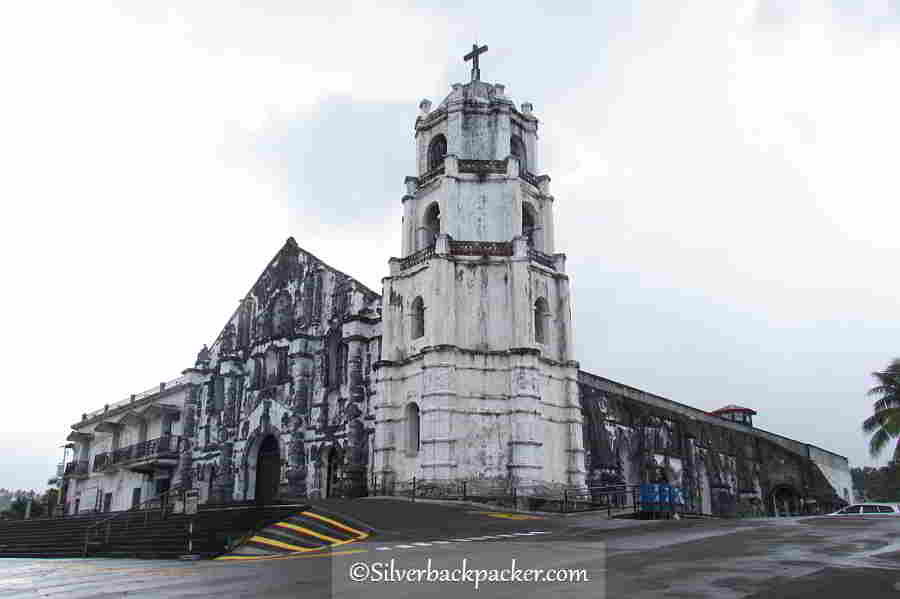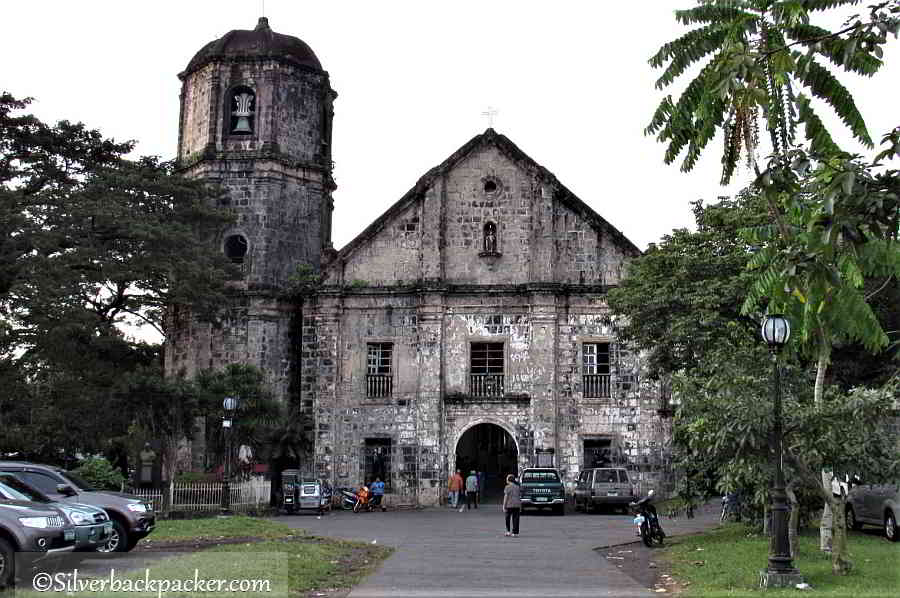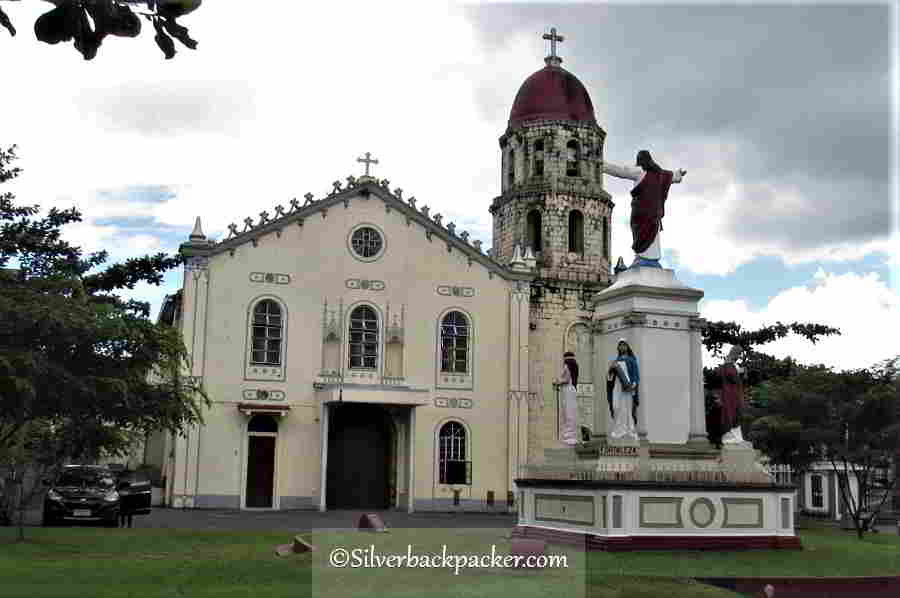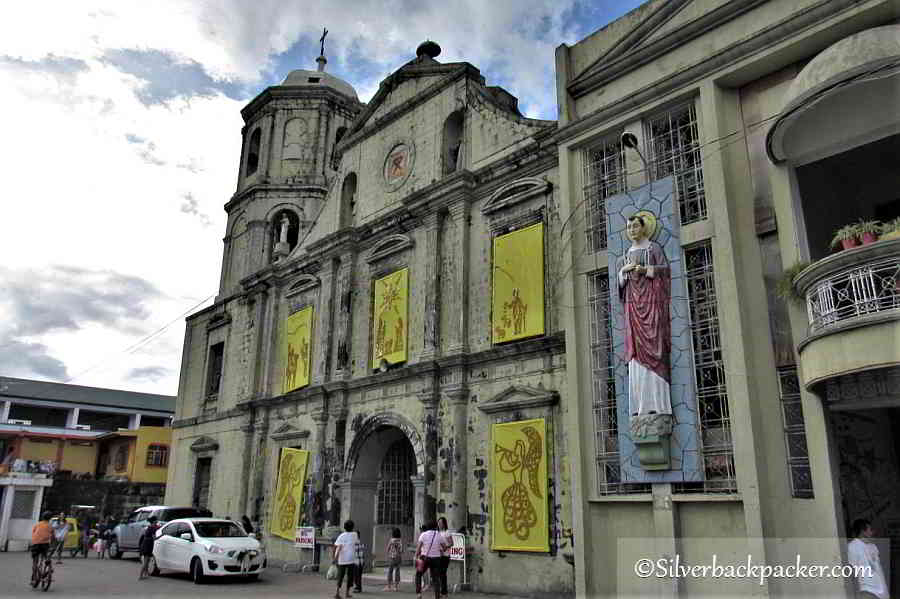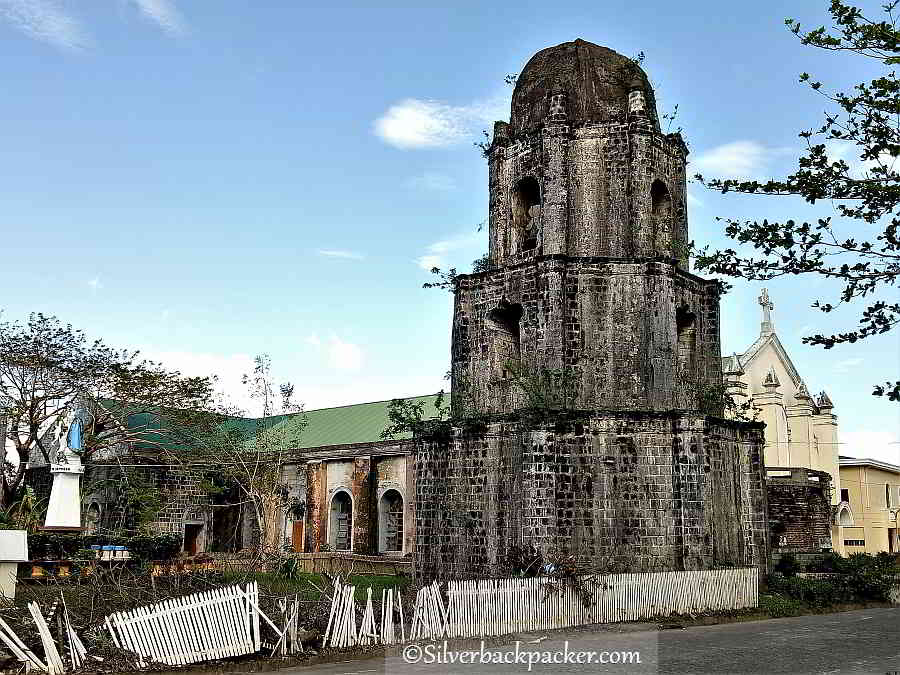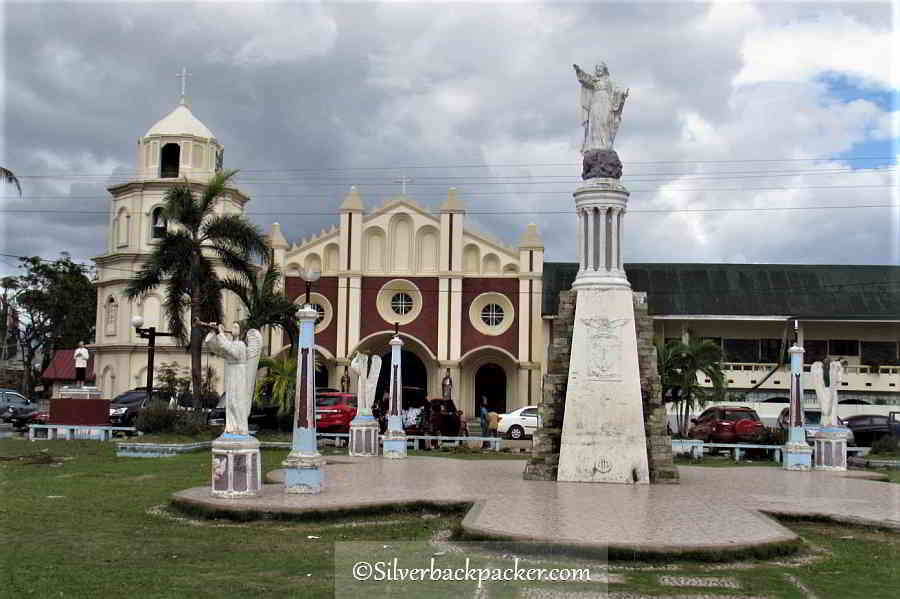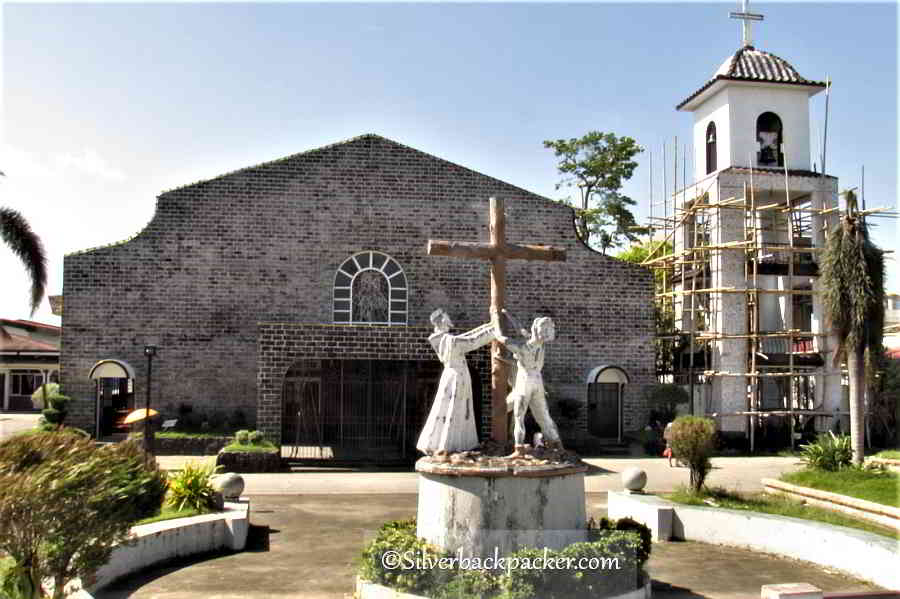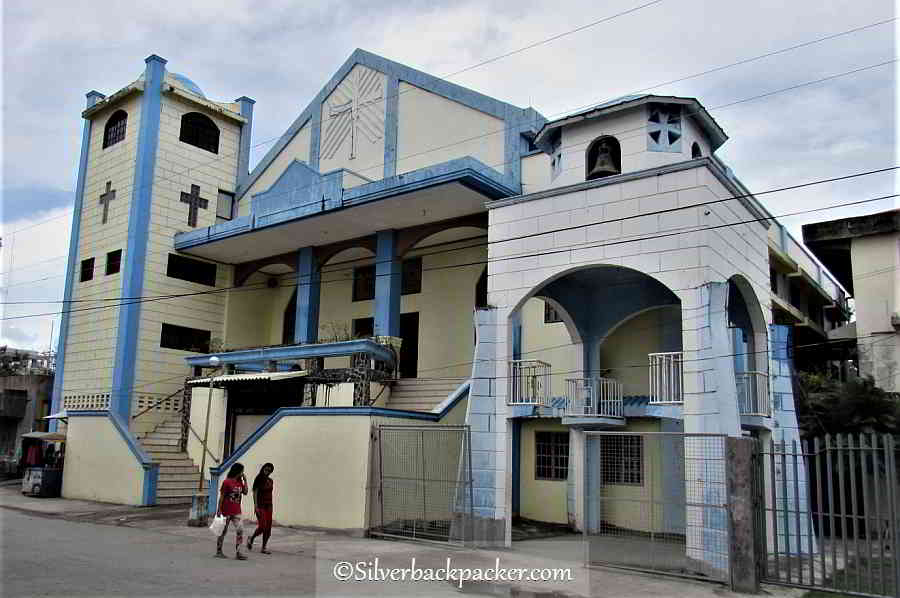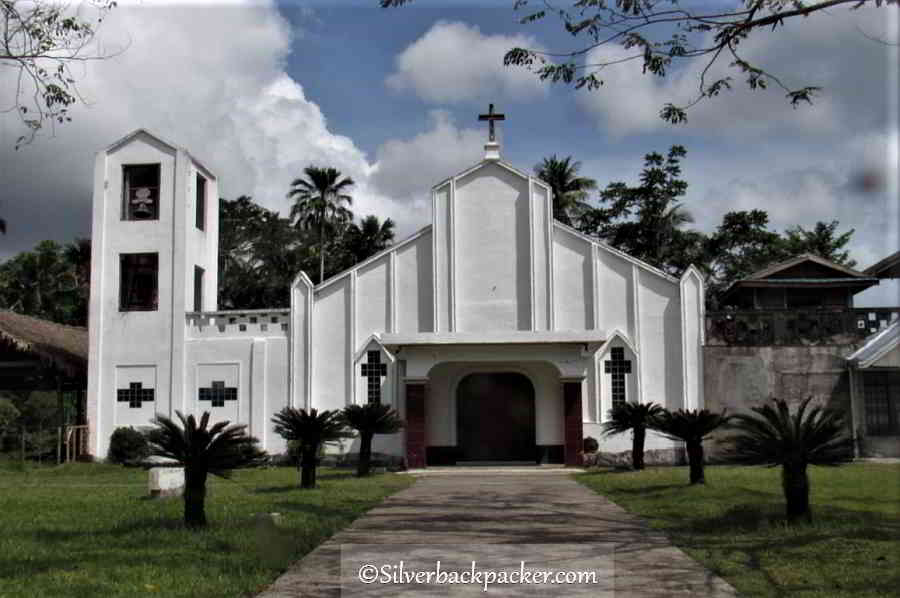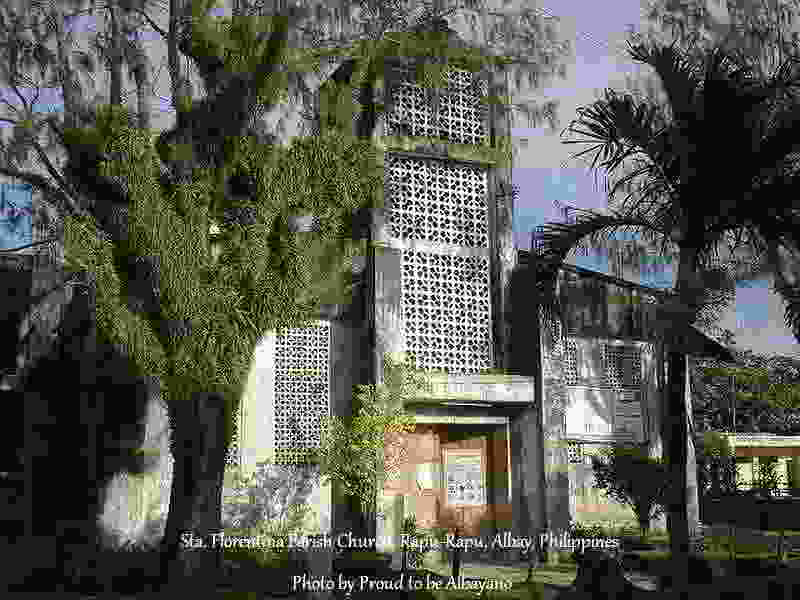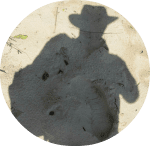Albay Churches to Visit for Seasonal Pilgrimages
Churches of Albay, Philippines - Part Two
Churches of Albay – Daraga to Polangui
Here is Part Two of Churches of Albay to Visit for Seasonal Pilgrimages – Daraga to Polangui
About Visita Iglesia Albay
As Easter approaches and we countdown to the end of the forty days of Lent and the beginning of Holy Week it has recently become the tradition to go out on Pilgrimages. The Visita Iglesia around the churches of Albay ( Spanish for “ to visit churches “ ) is a Holy Week tradition where believers visit and pray in a minimum of seven different churches around the Stations of the Cross.
One Day or Several Days
The Pilgrimage around the churches of Albay can be done in one day, usually on Maundy Thursday (which is the day before Good Friday, is a Christian holiday and regular non-working holiday in the Philippines.) if the churches are local, or it can be turned into a real Pilgrimage trip and take a few days.
There are different ways to complete the Visita Iglesia Pilgrimage Stations of the Cross. The Pilgrims can either visit fourteen churches for each of the fourteen Stations of the Cross, or pray at two stations of the Cross in seven different churches.
Suggested way to complete The Visita Iglesia
1. Visit Seven or Fourteen Roman Catholic churches.
2. The visits can be done either on the night of Maundy Thursday or on Good Friday as long as it is before the 3PM service.
3. Pilgrims on Maundy Thursday must seek and locate the Altar of Repose platform and respect the Lord’s presence. People may pray there or proceed to the Stations of the Cross.
4. Pilgrims on Good Friday may pray in front of the Stations of the Cross.
The Visita Iglesia Week
Travelling around during Holy Week has become so popular that tourists are now joining the thousands of Pilgrims and taking the chance to enjoy the festivities and visit old colonial churches and cathedrals on a Visita Iglesia Pilgrimage across the country.
Albay has its share of Spanish and more modern Churches too, which are worth visiting at any time of the year and especially for the purpose of Visita Iglesia Abra week.
Simbang Gabi
The Simbang Gabi originated in the early days of Spanish rule over the Philippines as a practical compromise for farmers, who began work before sunrise to avoid the noonday heat out in the fields. It began in 1669. Priests began to say Mass in the early mornings instead of the evening novenas more common in the rest of the Hispanic world. This cherished Christmas custom eventually became a distinct feature of Philippine culture and became a symbol of sharing.
Read Part One of Albay Churches to Visit for Seasonal Pilgrimages to find out more on the Simbang Gabi Albay Tour
Our Lady of the Gate Parish, Daraga, Albay, Philippines
An imposing facade with unconventional and highly exaggerated baroque embellishments distinguishes Daraga Church from similar structures built by Spanish missionaries during colonial times.
More than 200 years after its construction, Our Lady of the Gate Church in the town of Daraga in Albay remains a reflection of fine art with its heavy baroque and Renaissance Gothic influences.
Built on top of a hill by Franciscan friars in 1773 out of volcanic rocks, the church is second only to the belfry found at the Cagsawa Ruins as the most photographed man-made structure in Albay, if not in Bikol.
Its uniqueness comes from the solomonic columns, flowing cornices, and bas-relief images of saints and religious seals carefully carved throughout the entire face of the church.
Architectural style
The church’s main facade is embellished with four big columns that reach up to the base of the pediment and interrupted midway by round medallions portraying the evangelists Matthew, Mark, Luke, and John.
Around the arch of the main door are the three theological virtues: to the left is hope, represented by a lady wielding an anchor; on top of the keystone is faith, signified by a blindfolded lady; and to the right is charity, depicted by a mother with four children.
Visitors will have to spend time looking up at the numerous carved icons all over the church’s face, belfry, and wall facing Mayon Volcano.
Except for a few preserved artifacts, the church’s interiors have been renovated.
Near the right portal beside the belfry is an octagonal dome painted with frescoes. Mounted on the wall inside the baptistry is a sculpture in volcanic rock of the Holy Trinity, which was recovered from the church’s stone perimeter fence.
Set atop a hill, the site offers a sweeping vista of Mayon Volcano to the north and Ligñon Hill to the northeast and the town center to the south.
Cagsawa Outreach
Daraga is as ancient as Cagsawa and Budiao though not as populous and progressive as these towns before they were destroyed by Mayon’s eruption in 1814.
It was a mere outreach village of Cagsawa, which also began as an outreach village of Camalig that later grew into a thriving township. Daraga was also known at one point as Salcedo in honor of Captain Juan de Salcedo who stayed in the village for a short while.
The people and civil and religious authorities of Cagsawa had in 1771 wanted to transfer to Daraga, as they fear the destruction of lives and properties from a possible Mayon eruption.
The transfer already had authority from Governor General Simon de Salazar in a dispatch dated June 12, 1772. With this authority came the permission to construct a church.
Church of Stone
The people of Cagsawa immediately started to construct a church of stone masonry in keeping with the mandate of the Governor General. Disagreement among the religious and civil leaders, however, kept the transfer from happening until that fateful day in 1814 when Mayon unleashed its deadly fury.
Only when the devastated Cagsawa proved inhabitable was the transfer to Daraga done. The surviving inhabitants of Cagsawa and Budiao settled and populated Daraga but they paid dearly for the shortsightedness of their leaders.
The records are silent as to when work on the church on the hill resumed. What is clear is that Daraga Church was consecrated in 1854.
As it sits serenely on a hill, Our Lady of the Gate Church, Daraga, Albay has become today a most memorable monument of the Albayanos’ remarkable resilience, zest for life, and undying faith.
Our Lady of the Gate Church, Daraga is one of the best churches in Albay for Visita Iglesia, Holy Week, Simbang Gabi and Misa de Gallo?
The church is known for its Churrigueresque architectural style in its façade, a fine example of Baroque architecture. The façade and its walls are made out of volcanic rocks, which are rich in the area. The current white façade is the result of a coating of lime for protection from deterioration.
It is one of the few churches in the country that has four spiral columns known as Solomonic columns or salomónicas.The four columns bear round medallions, each with carved images of the four Evangelists. Another characteristic of the façade, which is unique to the church, is the absence of either vertical columns or horizontal cornices. Engraved on the façade and the adjacent belfry are statues of saints, mostly Franciscans, and rare religious seals such as the coats of arms of the Franciscan order, the Pope’s tiara with the keys, and the five wounds or stigmata of St. Francis which survived the Second World War.
The arch over the entrance has an inscription in Latin which reads, “Bene fundata est domus Domini supra firmam petram” (Well founded is the house of the Lord on firm rock). Symbols carved out of stones of the three theological virtues (hope, faith, charity) and the Eucharist are also engraved. – Wikipedia
Church of St. John the Baptist, Camalig, Albay, Philippines
Another imposing religious structure in the Province of Albay is the Church of St. John the Baptist (San Juan Bautista).
Made entirely out of solid blocks of volcanic rock from Mt. Mayon, the Camalig Church dates back to 1842.
Hundreds of stonecutters worked under the supervision of Spanish priests to fashion the church from lava rock.
Completed in 1848, it was considered one of the strongest, most massive, and most beautiful churches in the entire region.
Camalig evangelization
Christianity came to Camalig by way of Capt. Luis de Guzman and Fr. Alonzo Jimenez, an Augustinian priest who came with the Miguel Lopez de Legazpi expedition.
Evangelization of Camalig was started in 1578 by Augustinian missionaries and, when they left, the Franciscan priests Pablo de Jesus and Bartolome Ruiz continued their work.
In 1579, Camalig was formally inaugurated as a town and parish and the center was located in Binanua-an. The first church, which was made of wood, and the “Escuela Catolica” were established in this place.
A decree signed by Governor and Captain General Pedro Bravo de Acuna for the construction of a church and convent of stone was issued in 1605. A boy’s school and a dungeon for vagabonds, troublemakers, and sentenced criminals could be found a short distance away.
Town relocation
When Mayon Volcano erupted on February 1, 1814, parts of Camalig were devastated and the nearby towns of Cagsawa and Budiao were destroyed.
Although the church remained standing, the eruption prompted local town officials to transfer the center to the mountains: first to Palanog, next to Quilaponte, and then Baligang.
After a fire razed the new settlement in Baligang in 1837, the town government was reinstated in its original location.
The church and convent were rehabilitated and reused. Their reconstruction from 1842-1848 consumed all the volcanic stones in the town
Church contributions
In 1845, the church’s nave its doors decorated with carvings, the bell tower, and tiled roof were completed.
As it now stands, it depicts a hybrid of Renaissance and Gothic designs with a little touch of Romanesque. The frontispiece has few ornamentation that are originally of the church’s 19th century reconstruction. It has thick walls, and its buttresses are three meters thick at the base.
Affluent families and residents of the town vied with one another to provide the church interior with plush furnishings, be they wood, glass, silver, gold, brass or copper.
Their generous contributions also paid for the bells, except the biggest one as this was donated by the Franciscan order, and the baptismal font.
Camalig’s prominent families also took care of the two marble holy water fonts at the entrance as well as two other smaller ones on the western side. Five capitanes each donated a crystal chandelier.
Cultural value
St John the Baptist church sustained heavy damages during Typhoon Sisang in the 1980s but was immediately restored through the generosity of Camalig residents.
Today, it is one of the most beautiful and best-preserved churches in Albay and is a must-visit because of its immense cultural and historical value.
It was under the care of the Franciscans for 405 years or from 1578 to 1983. It has survived the Spanish-American War, Filipino-American War, and World War II and withstood Mayon Volcano eruptions, earthquakes, and strong typhoons.
St John the Baptist Church in Camalig is one of the best churches in Albay for Visita Iglesia, Holy Week, Simbang Gabi and Misa de Gallo?
Our Lady of Assumption Parish, Guinobatan, Albay, Philippines
Although the Church of Our Lady of the Assumption today no longer mirrors antiquity, Albay’s history would be incomplete and poorer without it.
While this current structure dates back to its latest rebuilding in 1906, the first Guinobatan Church was actually constructed in the late 1600s.
Don Francisco Bagamasbad, chief of the “Tenientes Absolutos,” spearheaded efforts in 1678 to elevate Guinobatan’s status from a visita of Camalig into an independent municipality, and these achieved fruition in 1688. Soon after, a church dedicated to Our Lady of the Assumption was built.
Through the centuries, the Guinobatan Church suffered destruction in the form of natural calamities like typhoons and Mayon eruptions as well as the ravages of the Revolutionary and Philippine-American Wars.
First Gobernadorcillo
When it became a town from being an outreach village or visita of Camalig set up in 1672, Don Bagamasbad became its first “gobernadorcillo” while Fray Alonzo de Zafra, OFM, was named first minister of the new parish and Fray Jose Carreon, OFM, the first parish priest.
The town of Guinobatan was then located at the northern bank of what is now San Francisco River. Its first church, reportedly beautiful, was built in Barrio Tandarora.
Nearby was a spacious parochial house where the poet and recorder of the epic-fragment “Ibalong,” Fray Bernardino Melendreras, OFM, dwelt for a long time. German naturalist Fedor Jagor also stayed there in the company of Fray Melendreras. Nearby was a primary school house.
In 1742, a very strong typhoon locally dubbed as “bagyong ogis” destroyed these edifices. In that same year, Mayon Volcano erupted. In 1790, a smallpox epidemic claimed the lives of a large number of adults and infants. A big fire followed, leaving nothing, not even the beautiful church.
A Bigger Church
The town was moved closer to the banks of San Francisco River under the direction of the Franciscan Missionaries. A bigger church was constructed.
In 1800, volcanic stones rained on the town but the people were not deterred from proceeding with the work on the new church.
Two years later, a new set of bells was installed in the bell tower. These bells are still used in the present church. Barely finished, the church was gutted by fire in 1806. Two years later, there was another smallpox epidemic, but the worst was yet to come.
On February 1, 1814, the terrible eruption of Mayon Volcano destroyed the recently rebuilt town. The people decided to move up to barrio Mauraro.
In Mauraro, the 1814 disaster continued to haunt the people who remained apprehensive of the volcano’s eruptions. They decided to move out to the coasts of Panganiran Bay where they pitched provisional camps. However, the Moros at nearby Burias Island would attack them every now and then.
First Colegio
In 1818, the decimated refugees decided to again relocate to the town’s present site. They built a new church and a tribunal for civic purposes. Natural calamities—fires, typhoons, epidemics, volcanic eruptions—occasionally visited the town but the people already had the resolve to stay, reconstruct, and repair the town, and their church whenever destroyed, time and time
again.
Undaunted by those enervating experiences, the Franciscan Missionaries even decided to set up Colegio de San Buenaventura, the first male normal school in the Bikol Region. Designated as a “colegio de primera clase,” it was built under the direction of Fray Carlos Cabido, OFM, then the parish priest of Guinobatan.
In 1899, the Provincial Government of Albay under the Malolos Government was transferred to Guinobatan with the Colegio as the seat of the Revolutionary Government.
When invading American forces attacked Albay during the outbreak of the Filipino-American war, General Jose Ignacio Pua ordered his bugler, Captain Mesias, to burn Colegio de San Buenaventura and other big buildings in the town center. Sadly, the church was also torched.
Mostly through the efforts and from the personal funds of Msgr. Julian Ojeda Ope, first Guinobateño priest, and his family, a new church rose out of the ashes of the old on December 8, 1906.
The Church of Our Lady of the Assumption in Guinobatan is one of the best churches in Albay for Visita Iglesia, Holy Week, Simbang Gabi and Misa de Gallo?
St Stephen Protomartyr Parish, Ligao, Albay, Philippines
Like other Spanish parishes in Albay and other areas of the country, Ligao started with a wooden church that was constructed in 1608.
This was around two years after the first Franciscan missionary, Fray Luis de San Juan, OFM, first set foot on a place called Cavasi and made it an outreach village of Polangui.
Its original name was really “Cavisi” for “commercial center,” probably owing to the big number of Chinese traders, 47 in all, who lived there. The inhabitants and traders from other places, however, mispronounced it as “Cavasi.”
Much later, Cavasi was renamed Ligao.
When Ligao’s first church, placed under the patronage of St. Stephen the Protomartyr, was razed to the ground in 1614, another wooden church was built.
Fray Francisco Vicente, OFM, undertook the creation of the first stone and brick church in Ligao. Before it was completed, the church as well as the municipal building were burned to the ground by prisoners who staged a riot after a religious procession held during the Feast of the Three Kings on January 6, 1676.
In 1709, a new church was constructed under the direction of Fray Ildefonso de San Buenaventura, OFM, but this was repeatedly ravaged by calamities until the 1760. One strong typhoon that wrought much destruction was the notorious 1742 “bagyong ogis.”
The construction of a much bigger St. Stephen the Protomartyr was started in 1760, but but a strong earthquake partially damaged it. It was repaired and construction continued.
Its frontispiece was completed in 1812 under the supervision of Fray Manuel Royo, OFM. In 1846, Fray Tomas de Alfafara, OFM, completed tiling its roof. He also started the construction of a stone parochial house.
The main church was completed in 1881, but its belfry was finished in 1882 under the direction of Fray Manuel Crespo, OFM. Fray Crespo was named minister of Ligao in 1876.
He was a bosom friend of Fray Bernardino Melendreras, OFM. Like the latter, he was also popular as a writer. To his credit is the authorship of the “Grammatica del Idioma Bikol.” He also translated into Bikol many devotional booklets.
Today, much of the church including its facade is a product of modern renovations. But the passageway that leads to the rectory still retains the original brick walls, and the brick arches still show their magnificent construction.
The original parts of the church could be seen on the side and rear buttresses which are mostly made of bricks.
St. Stephen the Protomartyr in Ligao is one of the best churches in Albay for Visita Iglesia, Holy Week, Simbang Gabi and Misa de Gallo?
.
Saint Michael the Archangel Church, Oas, Albay, Philippines
Although the earliest Oas Church made of more permanent materials was built in 1825, it did not survive the calamities in the form of a typhoon and volcanic eruption that struck the town.
This current St. Michael the Archangel Church in Oas, Albay dates back to its latest rebuilding in 1997; however, the ruins of the early 19th century structure can still be seen inside the church compound.
What remains of the old church and baptismal font as well as the rectory showcase the artistry of the early periods of colonial construction and serve as town attractions.
Visitors can still make out the inscriptions carved on the intricately designed baptismal font. Another jewel is the old image of St. Michael on the wall of ancient bricks inside the old rectory.
Although the early church did not survive, its belfry did. It still stands as solid as when it was first constructed, out of huge stone slabs so carefully laid out you could not insert a thin blade between the rocks.
Parish founding
Evangelization in what is now the town of Oas began in 1569 with Fray Baltazar de los Reyes y Miranda of the Order of Friar Minors (OFM). Worship was done in a chapel that Fr. de los Reyes built.
Under the tenure of Fray Geronimo de Aguilar, OFM, a church made of wood was built in 1586. He placed it under the patronage of St. Michael the Archangel who would become the town’s patron saint to this day. Fray Geronimo would be credited as the founder of Oas.
It was only in 1605, however, that Oas was founded as the St. Michael the Archangel Parish by Franciscan missionaries. It had Fray Marcos de Lisboa as its first pastor.
Wood to stone church
The transformation of the wooden church to one of stone started with Fray Francisco de la Anunciacion y Peñaranda, OFM, in 1695. He added stone foundations and a convent.
Fray Francisco Aragoneses, OFM, continued Peñaranda’s work starting in 1816. In 1825, a bigger church with rectory was built out of volcanic rocks and bricks. Fray Manuel Brihuega, OFM, put the finishing touches to the buildings in 1848.
The church and rectory were unfortunately damaged in a fire in 1866 but were immediately rebuilt that same year. With the help of parishioners, a more massive church of red-orange brick and volcanic rocks, put together with honey, lime, and egg, was constructed. Just two decades later, both these structures were demolished by a strong earthquake and subsequent typhoon.
Another church that rose out of the 1884 rubble were again damaged by a typhoon in 1947. Fr. Luis Dimarumba spearheaded efforts to have the structure repaired.
The 1997 Renovation
In 1997, under the leadership of Msgr. Rolando Diokno, the Oaseños finally realized their dream of coming together for worship in a beautifully renovated church. On May 8, 1997, the fiesta of the patron saint was celebrated with the blessing and inauguration of the renovated church building.
While the church’s interior has been modernized, its ancient brick walls not been torn down. The facade though has been radically altered and it is now difficult to determine what has been kept of the original in the structure’s current Gothic and Romanesque appearance. Its remaining ancient structures appear to depict, however, a distinctive baroque style.
The old church used to have capiz shells for its window panels. These were destroyed by fire and replaced with stained glass.
The bell tower, octagonal in plan, remains largely untouched. It is built apart but connected to the church by a grotto and storage dome. It has two-meter thick walls standing in three tiers and is roofed with a dome.
St. Michael the Archangel Church in Oas is one of the best churches in Albay for Visita Iglesia, Holy Week, Simbang Gabi and Misa de Gallo?
Saints Peter and Paul Parish Church, Polangui, Albay, Philippines
This present day Church of Saints Peter and Paul was built in 1664 and included a convent, casa real, and schoolhouse.
Although it has undergone massive renovations, much of the original bricks and stone walls are still in place. The bell tower is still the same structure built by Fray Juan Bautista Marza.
With the completion of the Polangui Church in 1664 under the supervision of Fray Marza, a convent, casa real, and schoolhouse soon followed. The parish was also placed under the patronage of Saints Peter and Paul.
As it now stands, the Saints Peter and Paul Church looks very different from its original appearance due to repairs and renovations done on damages inflicted by natural calamities as well as wear and tear. It also partly suffered from the neglect by parishioners and church authorities.
Notwithstanding the ravages of time and harsh weather, the church retained much of its old world charm. At the northern part of the church compound can still be found stone and brick walls that hark back to its 17th century construction.
The Church of Saints Peter and Paul in Polangui is one of the best churches in Albay for Visita Iglesia, Holy Week, Simbang Gabi and Misa de Gallo?
Saint James the Greater Parish Church, Libon, Albay, Philippines
In 1573, Juan de Salcedo set up the garrison named Santiago de Libong, and a church was constructed under the patronage of Saint James the Apostle. In 1578, when the Franciscans arrive, it was ceded to the province under San Gregorio Magno. A church made of red bricks was constructed in Linao in 1591. This church was destroyed in mid 17th century and a new church was constructed.
In 1847, the town was ceded to Albay from Camarines. Huerta reported that the new church was reconstructed by Vicente de Dosbarrios in 1865 and it was made of solid bricks, while the casa parroquial was made of stone. The church was destroyed by a strong earthquake in 1907 and it had to reconstructed with new materials. Wikipedia
St. James the Greater Church in Libon is one of the best churches in Albay for Visita Iglesia, Holy Week, Simbang Gabi and Misa de Gallo?
Our Lady of Salvation Parish, Pio Duran, Albay, Philippines
We need information on this church. Its History, Relevant Dates, and anything else you may know.
If you can help please send by email from the Contact Page
St. John The Baptist Parish, Jovellar, Albay, Philippines
Jovellar is a fifth class municipality in the province of Albay, Philippines. It was named in honor of Spanish governor-general Don Joaquín Jovellar y Soler.
Main access to the town is via Guinobatan. Jeepneys ply the 16 kilometres (9.9 mi) distance from Guinobatan to Jovellar daily with the first trip from Guinobatan leaving as early as 5 AM and the last trip to Jovellar usually at around 5 PM.
Once you arrive in the town center, you can find a statue of the national hero, Dr. Jose Rizal, and the town church is about 200 metres in front of it.
We need more information about this church. Its History, Relevant Dates, and anything else you may know.
If you can help please send by email from the Contact Page
Saint Raphael Parish, Manito, Albay, Philippines
Address ;- It-ba, Poblacion, Manito, Abay 4514
We need more information about this church. Its History, Relevant Dates, and anything else you may know.
If you can help please send by email from the Contact Page
Saint Florentine Parish, Rapu-Rapu, Albay, Philippines
The municipality of Rapu – Rapu is composed of two big islands, namely, Batan and Rapu – Rapu. Before it became a municipality on 1901, it was a bario of Prieto Diaz, Sorsogon. The Visita (Chapel) here and the spiritual and pastoral needs of the people were taken care of by the Parish Priest of Prieto Diaz. Records show that Rev. Fr. Santiago Nepomuceno was in charge here in the early part of 1891, then Rev. Fr. Juan Brusola took over. It was during his term that the Parish of Sta. Florentina was founded.
How to Travel to Rapu-Rapu
From Legazpi Port there is a boat to Rapu-Rapu once a day. Fare is P100
Motorboat (Passenger Boat) – Legazpi to Rapu-Rapu (Pob) – 7:AM to 9:00 AM
Motorboat (Passenger Boat) – Rapu-Rapu (Pob) to Legazpi – 12:00NN to 3:00 PM
We need more information about this church. Its History, Relevant Dates, and anything else you may know.
If you can help please send by email from the Contact Page
Travel Tip: If you’re looking for a Budget Friendly way to book the Planes, Trains, Buses, and Ferries, on the Manila to Legazpi route, we use 12Go.Asia to compare prices!
SILVERBACKPACKER
Essential Travel Guides
Churches of Albay
Visita Iglesia
Simbang Gabi
Albay
Bicol
Philippines
How to travel to Albay from Manila
Legazpi is the commercial centre of Albay and is where you should head to. From Legazpi you can reach all parts of Albay easily.
How to Get to Legazpi City
By Air
Philippine Airlines and Cebu Pacific have regular flights from Manila and Cebu to Legazpi City.
By Bus
Several bus lines connect Metro Manila to Legazpi City including Philtranco, Superlines, DLTB, Cagsawa Tours, Amihan, Isarog Line, St. Jude Transit.
Fares start at around P800 and travel time is approximately 9 to 10 hours.
Where to Stay in Legazpi City, Albay, Philippines
From Backpackers Hostels, to Homestays to Luxury Hotels, Legazpi has accommodation to suit everyone and every pocket.
Did you like “ Churches of Albay to Visit for Seasonal Pilgrimages Part Two ” ? If so then please share this page with your friends.
Leave a comment below to let me know what you liked best.
Follow Silverbackpacker on Facebook, Instagram ,Twitter and Pinterest for more travel adventures
Thankyou for sharing 🙂
Please Note – All blog post photos on Silverbackbacker.com are of a lower quality to enable faster loading and save you data. If you would like to buy or license higher quality copies of any of the photographs you can email us at silverbackpackertravels@gmail.com
All photographs and content on this website remain the property of Silverbackpacker.com. Images may not be downloaded, copied, reproduced or used in any way without prior written consent.
Print purchases entitle the purchaser to the ownership of the image but not to the copyrights of the image which still remain with Silverbackpacker.com even after purchase.
Follow Silverbackpacker for more of his Travels
Facebook @silverbackpacker | Instagram @silverbackpacker
Twitter @silverbackpaker | Pinterest @silverbackpaker
Audere Est Facere – Silverbackpacker.com – To Dare is To Do
Affiliate Disclaimer: Links on this website may be affiliate links that could result in us receiving compensation when you purchase a product or service from that link. You do not pay any extra fees for these items. This helps us to keep this website going. Thank you for your support.
Disclaimer | Privacy Policy | All Rights Reserved

